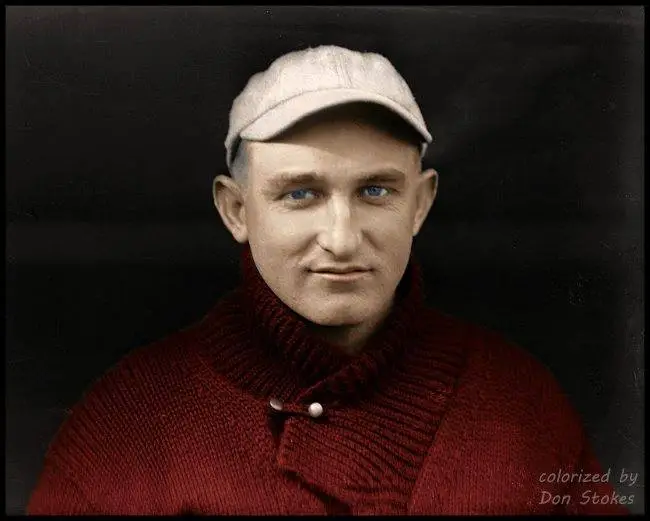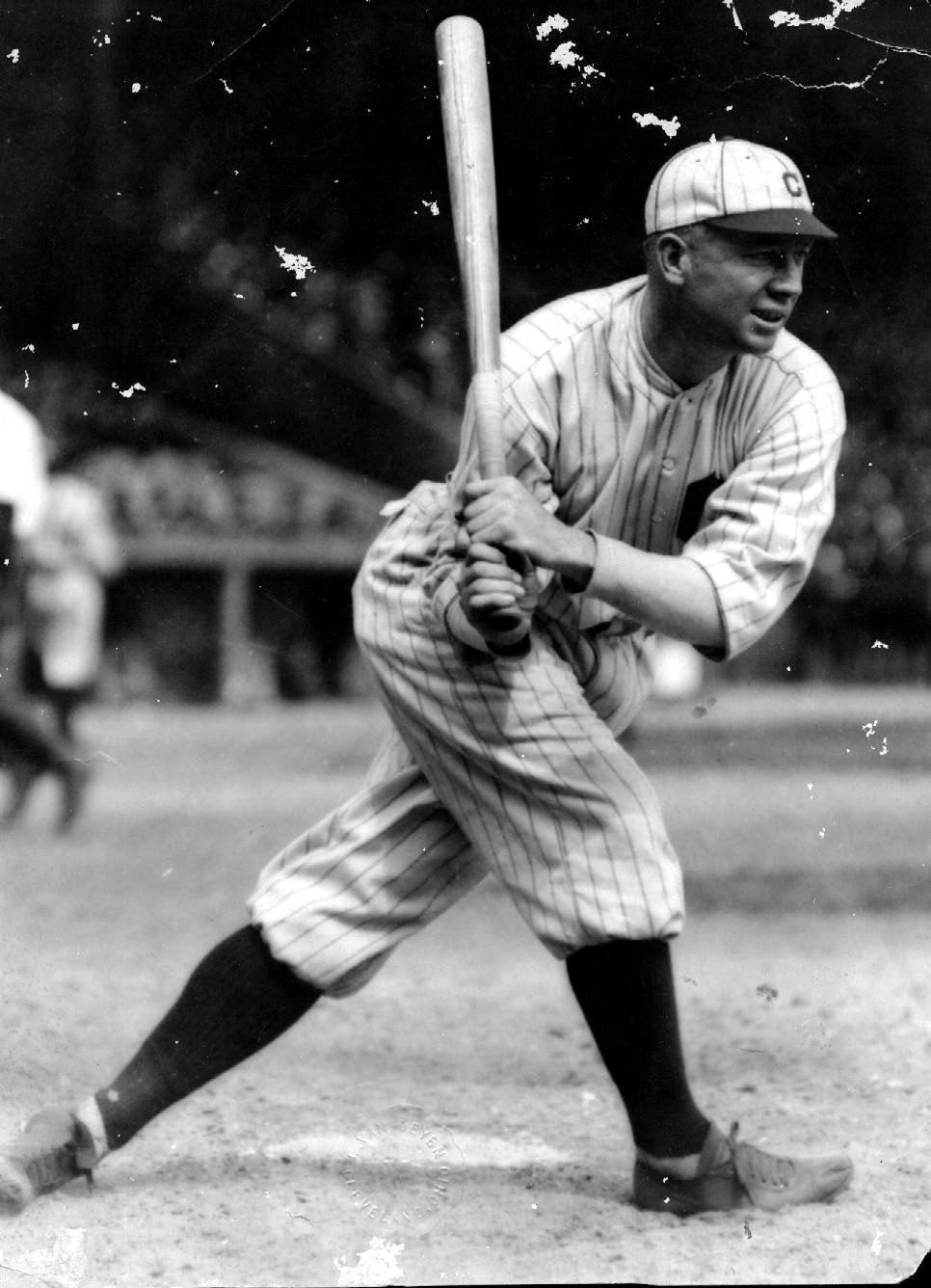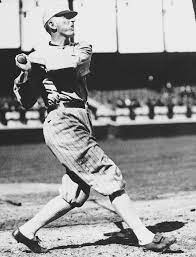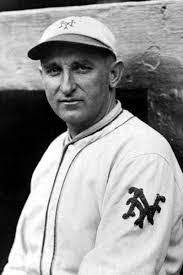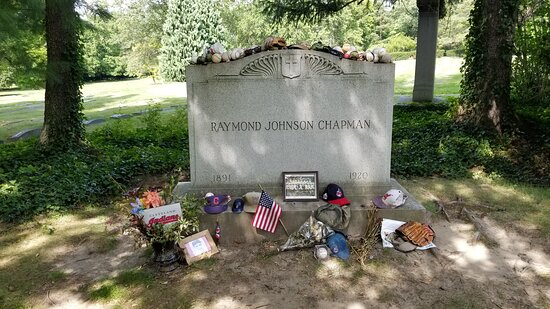8/9/1918 - Battle within a battle, as a part of what will become known as "The Hundred Days Offensive" that leads to the conclusion of the war, British, Australia, Canadian, American and French forces in northern France continue their assault on the German Army at the Battle of Amiens (also known as The Third Battle of Picardy). A little five-day bloodbath of WWI that will add over 121,000 casualties to the butcher's bill of the conflict, a number that also includes Americans from three battalions of the 33rd U.S. Infantry Division that capture the important German defensive positions atop a barren elevation of rock only 75 feet high overlooking the Somme River called Chipilly Ridge.
Atop Chipilly Ridge - Painting By James Dietz
Responding to the final blunting of the German Army's Operation Michael spring offensive near the town of Amiens, Supreme Allied Commander, French General Ferdinand Foch orders a counter-offensive to reduce the Saint-Mihiel salient on the Meuse River and free railway traffic through the town of Amiens from German shellfire. The chain-of-command already planning an attack in the Somme region of the front, Lt. General John Monash of the Australian Corps of the British Fourth Army sends his assault plans to his commanding officer, General Sir Henry Rawlinson, who in turn passes them up to British Expeditionary Force commander, Field Marshal Sir Douglas Haig, then Haig passes the plan on to Foch. The French general accepts the basic British plans, but orders modifications that have the French First Army participating in the attack and postpones the battle from beginning until August 8th. Using surprise tactics proved out by the Australians in July at the Battle of Hamel, the assault will be made without days and hours spent bombarding the area to be taken, assault tanks and infantry advancing behind a rolling barrage, while the French, lacking tanks, will hold their portion of the offensive until the British Fourth Army has advanced on it's objectives, a time period the planners estimate will take 45 minutes. Hundreds of thousand soldiers involved, the major push by the Allies, will be made by 19 British Empire divisions (10 British, 5 Australian, and 4 Canadian), 12 French divisions, 1 American division, 1,104 French aircraft, 800 British aircraft, and 532 tanks (by the end of the battle only six machines will still be considered battle ready), supported by over 2,000 artillery pieces. Opposite the Allies assault force, in a line of three defensive trenches are the men of the German 2nd Army, six divisions in the line and two divisions in reserve.
Surprise desired and successfully achieved (helped along by troop movements being made at night, a dense unseasonably fog covering the area in grey that in some spots limits visibility to ten yards, the action being called a "raid" instead of an "offensive," signposts covered with the message to the men to "KEEP YOUR MOUTH SHUT," and the efforts of two RAF pilots masking the sound of advancing tanks by flying over the front in twin engine Handley Page 0-400 bombers ... for risking flight in the fog, Captains Gordon Flavelle and William Peace of the 207th Squadron will be awarded the British Distinguished Flying Cross) at 4:20 in the morning, separated by a distance of only 500 yards, the first phase of the battle begins with the British III Corps attacking north of the Somme River, the Australian Corps advancing south of the river, and the Canadian Corps launching their assault south of the Australians, while 45 minutes later, following the plan, the French 1st Army of General Marie Eugene Debeney advances south of the British Fourth Army, supported by a battalion of 72 British Medium Mark A Whippet tanks. Shocked when Allied troops suddenly step out of the fog and begin firing on them, the Germans take five minutes to respond to the attack, and by then, the Allies are already into their first line of defense. Taking pot shots before being killed, retreating, or surrendering, much of the German defensive line falls apart almost immediately (the speed of the advance results in several German officers and divisional staff members being captured while eating their breakfasts) and first day objectives are taken before noon with the Allies ripping a 15 mile hole into the German line south of the Somme River and in a war in which thousands of soldiers on both sides perish gaining only feet and yards of enemy real estate, the Canadians move forward 8.1 miles, with the Australians advancing 6.8 miles, the French gaining 5 miles of their own turf, and the British putting 2 miles of French terrain to their rear. In the five days of battle, eight Canadians will win Great Britain's most prestigious award for valor, the Victoria Cross:
*25-year-old Private John Bernard Croak, killed taking out a system of machine guns near Hangard Wood on 8/8.
*27-year-old Corporal Harry Garnet Bedford Miner, mortally wounded single-handedly taking out three German machine gun positions on 8/8.
*31-year-old Corporal Herman James Good, survives taking out by himself three machine gun positions, and then with the assistance of three men, captures a battery of three German five-inch artillery pieces (and their crews) on 8/8.
*29-year-old Corporal Frederick George Coppins, the wounded soldier is the only survivor of five men team that takes out a machine gun and four men of its crew, captures four other Germans, and then continues leading his platoon against it's next 8/9 objective.
*25-year-old Lance Corporal Alexander Picton Brereton, inspires his platoon by attacking a machine gun position by himself that is pinning down his men, an action in which he bayonets to death two Germans and captures an additional nine soldiers while his unit cleans out five other defensive positions on 8/9.
*American-born 23-year-old Sergeant Raphael Louis Zengel (born in Minnesota, he and his mother move to Canada when he is a young boy), his platoon under attack as it moves forward, he rushes forward 200 yards and takes out a machine gun tormenting his men, then knocks out a second position, rendered unconscious by a German shell, when he wakes he continues to lead his platoon forward on 8/9.
*30-year-old Lt. James Edward Tait, before being mortally wounded by a German shell, he takes out a machine gun position and then leads his unit in destroying twelve other enemy positions and taking twenty men prisoner.
*For actions on 8/8 and 8/9, 28-year-old Lt. Jean Baptiste Arthur Brillant, captures a machine gun and kills two members of it's crew, and though wounded, then leads his men in a forward assault that takes out fifteen machine guns and captures 150 men manning the German position (Billant will lay low an additional five Germans in the attack), despite being wounded again, spotting an artillery piece firing on his men, he concludes his day of glory by leading his a small party 800 yards forward, taking out the gun as he suffers his third wound of the day, one from which he perishes the following morning.
. A butcher's bill for the first day of battle of relatively modest losses compared to the rest of the war ... the Allies take 12,000 casualties, but inflict losses on the Germans of more than 30,000 men, most becoming prisoners of war at first contact with their opponents (additionally, 400 German artillery pieces will be captured). A bad, bad day for German military forces, General Erich Friedrich Wilhelm Ludendorff, will describe the events of 8/8/1918 as "Schwarzer Tag des deutschen Heeres" (the "black day of the German Army"), not for the amount of men or terrain lost , but because of the low morale of the troops causing soldiers to capitulate in large numbers.
Some Of The Germans Taken Prisoner At Amiens
Ludendorff
One objective though has not been accomplished, some of the area's most important "high" ground has not been taken, leaving behind an abscess of men, machine guns, and artillery at Chipilly Ridge that unless cauterized, will continue to cause casualties among members of the Australian Corps pined down at the Somme River village of Hamel. Still in the area from having participated in the July Battle of Hamel, and now serving as a reserve unit for the British III Corps, when fresh troops are required to complete the capture of the ridge, the responsibility for reducing the defensive position becomes the task of the Illinois National guardsmen of the American 33rd Division's 131st Infantry Regiment, commanded by 62-year-old Chicagoan, Colonel Joseph B. Sanborn, a veteran of the Spanish-American War and fighting bandito bands along the Mexican border. Repositioning for their attack, the 131st Regiment completes a successful 18-mile overnight march to its jump off area and begins its assault on the high ground (and the defensive positions within the nearby trees of the Gressaire Wood) at exactly 5:30 in the early evening of Friday, August 9th. Advancing behind a rolling barrage on the German-held ridgeline, ignoring German counterfire that includes poison gas which will spoil many of the American's rations before they can be distributed, Sanborn establishes a forward command post from which he can orchestrate the assault. Though lacking advanced preparations and opposed by some of Germany's most experienced soldiers, Sanborn's men silence the German gunners in about 90 minutes and gain control of the northern edge of the ridge (capturing an abandoned command post, the Americans will be gifted with a cornucopia of information from the German regimental commander's telephones, maps, and papers). At the south end of the ridgeline, German resistance is more persistent and several hours of hard fighting is required before a critical portion of Gressaire Wood falls and elements of the 4th Australian Division are able to cross the Somme River and capture the commune village of Chipilly.
Destroyed German Position Atop Chipilly Ridge
Illustrative of the heroism of the men of the 131st in taking the ridge are the actions of 31-year-old Corporal Jake Allex of Chicago, Illinois. Born Aleksa Mandusic on July 13, 1887 in the Ottoman Empire village of Prizren, the Serbian transplants to the United States as a youth with his family, and Americanizing his name, becomes Jake Allex Mandusich, or simply, Jake Allex. Enlisting in the U.S. Army when the United States declares war on Germany after unrestricted submarine warfare begins again by the naval forces of German Emperor, Wilhelm II in 1917, on 8/9/1918, Allex is a member of Company H, 131st Infantry, 33rd Division when his unit attacks Chapilly Ridge. Advancing up the ridge, Allex finds all the officers in his unit either killed or wounded and takes command. At the front of his platoon, the Serbian-American leads his men against a machine gun nest that has been holding back their advance. Pinned down by the position, he advances 30 yards alone, killing five Germans along the way with the bayonet on his rifle, before then using the empty gun as a club at close quarters when the stabber at it's end breaks, taking out the machine gun and capturing fifteen members of the position's crew. For his efforts, Allex will be awarded the second Congressional Medal of Honor for an American in WWI (he will return to Chicago also bearing a World War I Victory Medal with three bronze service stars for his participation in the Somme offensive, the Meuse-Argonne offensive, and the closing trench clashes of the war, a Distinguished Conduct Medal from Great Britain, a Medaille militaire award from France, a Croix de guerre 1914-1918 with bronze palm from France, a Croix de guerre with bronze palm from Belgium, Italy's Croce al Merito di Guerra, the Medal of Military Bravery from the Kingdom of Montenegro, a Fourth Class Order of Karadorde's Star with swords from Serbia, and a Gold Medal for Bravery from Serbia ... he dies in Chicago on August 28, 1959 at the age of 72).
Allex
Final Resting Place In Chicago
Mission not yet quite accomplished, the next day the 131st continues to press forward alongside elements of the Australian Corps. Using snipers and light machine guns, the Americans obliterate several German attempts to set up defensive machine gun positions on the left flank of the advance and by 6:00 in the morning of August 10th, the unit is able to report to headquarters that all it's goals have been achieved and Chipilly Ridge belongs to the Allies. A small, but important victory that allows the Australian force to leapfrog over the Americans and continue the offensive against the Germans, made possible by the fighting spirit of the citizen soldiers of Illinois and the leadership displayed by the men's commander, Colonel Sanborn. Along with shifting his men to new positions with a long night march, leading his command through German shellfire, and establishing a dangerous forward command post where he can be as close as possible to his men, Sanborn will also briefly become his unit's quartermaster, personally delivering rations to his men that he has carried into the battle on his back, insuring the food properly gets where it needs to go. The skills Sanborn displays guiding his national guardsmen in taking Chipilly Ridge and the Gressaire Wood do not go unnoticed within the command structure of the Allies (in their first eleven days at the front, the unit, along with taking the ridge and wood, will also capture 700 German soldiers, 30 artillery pieces, a plane, over 100 machine guns, and 22 of it's men will be awarded various decorations for bravery), and Sanborn will eventually return to the United States bearing a Distinguished Service Cross and a Distinguished Service Medal from the United States government, a Distinguished Service Order from the British government, is made an Officer of the Legion of Honour, along with receiving the Croix de Guerre with Palm from the French government, and is made an Officer of the Order of Leopold by the Belgium government (Sanborn will retire from the Army in 1921 as a Lt. General, will run a mercantile business in Chicago that bears his name, and will die on December 22, 1934 at the age of 79). Even King George V of England gets into the act. Visiting the Western Front in early August, the monarch hears of the exploits of the 131st and decides to honor the men with a visit to their headquarters just to the south of the Somme River. On August 12th, at Molliens-au-Bois, the 131st is paraded before the king, guests that include American Expeditionary Force commander, General John Joseph "Black Jack" Pershing, and the 33rd Division's commander, Major General George Bell Jr., and an honor guard of military police ... the first and only time during the war that the king will personally visit and award medals to an American unit.
Australians Moving Beyond Gressaire Wood
Sanborn
Pershing And The King Review The 131st
One American soldier, 23-year-old Princeton graduate, Lt. John Allan Wyeth, will also be able to take the darkness he experiences with the 33rd U.S. Division at Chipilly Ridge and use the battle and his attempts to delivered sealed orders to the front as the inspiration for six inter-related sonnets he finishes after the war about the clash that will be published as the war poem, "This Man's Army: A War in Fifty-Odd Sonnets," in 1928 (which is republished in 2008). His work is now favorably compared to the writings of British soldier-poets Wilfred Owen, Isaac Rosenberg, and Siegfried Sassoon.
Ridge removed as an obstacle, the Allied soldiers continue forward and by the 12th they have pushed 14 miles into the defensive line of the Germans (on the 11th, General Ludendorff will offer his resignation for the Amiens debacle, it is refused, and on the 13th, at the town of Spa, Belgium, Ludendorff, Field Marshal Hidenburg, the German Chancellor, Georg von Hartling, and the German Foreign Minister, Paul von Hintze meet and come to an agreement that German forces can not end the war with a military victory, a day later, the German Crown Council decides victory in the field had now become most improbable). Though Foch would like to see the attacks near Amiens continue, the push stops on 12th as the British Third Army of Field Marshal Haig prepares to go on the offensive itself between the Ancre River and the Scarpe River. And so the beginning of the end for the Germans in WWI comes to a conclusion. Sadly, though the outcome of the war is now obvious to both sides, it will take 94 more days of wrangling with each other to come up with the Armistice of Compiegne, which ends the conflict on November 11, 1918 at 11:00 in the morning (Central European Time) ... enough time on the Western Front for the Second Battle of the Somme (8/21 - 9/3), an August and September advance into the German's Hindenburg Line, the Meuse-Argonne offensive (9/26 - 11/11) in which the 131st will once again participate, the Battle of St. Quentin Canal (9/29 - 10/10), the Fifth Battle of Ypres (9/29 - 10/2), and the Battle of Cambrai (10/8 - 10/10), along with ten rearguard clashes along the lines between the 9th of October and the 4th of November; enough time (7/18 to 11/11) for 2,242,075 more men to become casualties of the martial madness of the incorrectly named, "War to End All Wars," WWI (in all, there will be over 17,000,000 military and civilian dead during the conflict).




